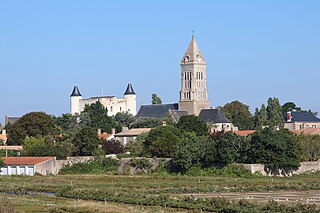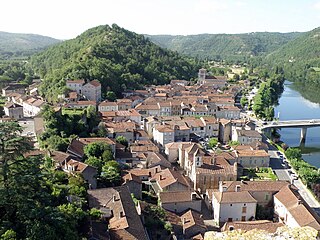History
Region seems to have been inhabited since ancient times. Well trimmed flints were found in Panetière, a standing stone in Peuil. Roman era substructures were discovered at La Croix-Dieu. The origin of the parish dates back to the Christian period.
In 1294, the difficulties between the secular and ecclesiastical co-reigning lords of the country, the Counts of Forez and the prior of Ambierle, were resolved by an agreement regulating the rights of justice, in particular.
Around that time, crusaders brought back Palestinian local names for different localities: Renaison, Montlivet, Judea. Walls protecting the castle and town were built in the early 14th century. In the 15th century, the great financier of King Charles VII, Jacques Coeur, acquired the eastern Renaison area. The city was sacked by the Calvinists in 1576, in 1591 and 1592-1593. Plague ravaged the area in 1629-1630. Passages of soldiers who "lived by theft and rapine" sparked a riot in 1691.
During the French Revolution, the co-lordship ends. Saint-Haon-le-Châtel replaced Renaison as the chief town of canton. This created financial and administrative difficulties for Renaison.
After the Congress of Vienna in 1815, marking the end of more than two decades of the Revolutionary/Napoleonic Wars, Renaison began to recover and become prosperous from its vineyards, mills on the river, crafts and shops, allowing a bourgeoisie to emerge. (Almost all the vineyards were destroyed by an epidemic of phylloxera in the late 20th century.)
In 1888, city of Roanne started the construction of the gravity type La Tache dam which was completed in 1891. St Peter's Church in Renaison was built in 1896. During the 20th century, the vineyard was rebuilt and the biscuit industry grew. Renaison becomes the common coast main Roanne. The town hall and the church tower were built in 1909. In the same year the railway from Roanne to Ambierle, known as Le Tacot serving the entire Roanne valley, started operating.
During the First World War, of the 423 drafted inhabitants of Renaison, 69 were killed and 17 were recorded as missing. During the Second World War, of 190 drafted inhabitants, 15 were killed and 3 were recorded as missing. On August 10, 1944, German soldiers set fire to several buildings in retaliation for the resistance which was well established in Renaison. 28 young Renaisonnais were deported. Therefore the municipality was awarded the Croix de Guerre 1939-1945 with the Bronze Star.
In 1969, the town was twinned with Gruyères (Switzerland).
A second dam, the rockfill Le Rouchain dam was built between 1970 and 1975. In 1976, a kindergarten was built, followed closely by a college in 1978. It will be extended in 1983 and 2006. A second match was signed in 1992 with Pagouda (Togo). On 14 February 1994, the entire vineyard Coast roannaise gets the designation of origin (AOC). In 1998, the town hall is enlarged and the work of redevelopment begins. In 2003, Renaison enters the Community of communes from West Roannais (CCOR).





























